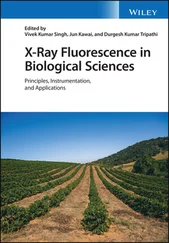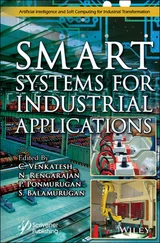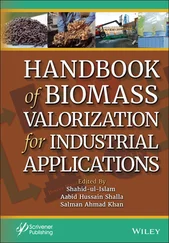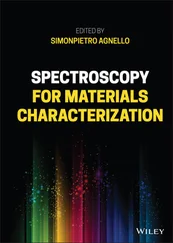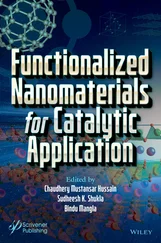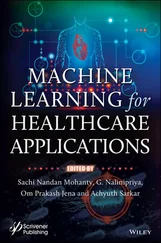Flat glasses usually only require shaping to fit the sample to the geometry of the measuring instrument; they already have a flat surface and are also homogeneous. The shaping can be carried out by cutting, breaking, or sawing. Remelting should be avoided, because a possible loss of easily volatile elements can occur.
For the preparation of glasses, the procedures described for metals can also be required to remove surface layers or for improving the surface quality, in particular to avoid the effects of laminations in the glass composition. As a result of the generally light matrices of glasses, the requirements for the surface quality are typically comparatively low, in particular when determining elements with high fluorescence energies due to their large information depths. The specific preparation techniques are again strongly dependent on the sample type and the analytical task. More detailed information on the preparation techniques for glasses can be found in the descriptions of the appropriate applications in Section 9.7.
Shaped glasses or art objects are often irregularly shaped, which means that sufficiently large areas are not available for a conventional large area analysis. In the case of valuable objects, sample preparation usually is not possible in order to avoid any damage to the object. Here, spatially resolved methods are recommended.
3.4 Small Parts Materials
Powder-like materials can be of various nature – minerals such as ores, rocks, or sands, slags or metal swarfs, but also polymer granules or secondary raw materials.
The sample preparation starts usually with crushing of the samples, which is usually combined with a mixture and division of the crushed material, in order to achieve sufficient representativity. For geological samples it is recommended to remove metallic components; Fe-containing particles for example can be removed by a magnetic separator, and other metals for example by flotation. After further grinding or cutting steps, the final making of the test sample can be carried out by filling the test particles into a sample cup or vessel, by pressing a tablet, or by producing a fusion bead. Depending on the starting material, the processing methods and sample quantities given in Table 3.6are usually used.
In the following, it is to be assumed that sample particles exist in a size of 2 mm, which means that they were prepared by breaking or cutting.
Table 3.6 Steps for processing and sampling of small part materials.
3.4.1 Grinding of Small Parts Material
The pre-crushed materials for further processing should have a grain size of approximately 1–2 mm for hard materials; for soft materials the grain sizes can be up to 10–20 mm. Further processing is then carried out by cutting or grinding. Depending on the material quality, various mills are available for this purpose. Table 3.7summarizes the available mills for the different materials to be ground.
The selection of an appropriate mill depends essentially on the type of material to be ground. Hard and brittle materials are most effectively crushed by friction or thrusting, and soft and fibrous materials rather by cutting. Cooling of soft and fibrous materials to low temperature, e.g. by liquid nitrogen (LN 2), can temporarily convert these materials into a hard and brittle state. When selecting the grinding vessels for very hard samples to be ground one should look for a high-density material (for example tungsten-carbide). For medium-hard specimens good milling results can also be achieved with lighter material grinding tools (steel, agate).
Table 3.7 Mills for fine grinding of powder-like material.
| Type of material |
Type of mills |
Functional principle |
| Milling materials |
Size of the starting material |
| Milling speed/revolution speed |
Final grain size |
| Soft to medium hard, brittle as well as fibrous material |
Rotating mill |
Comminution by cutting |
| Steel |
Up to 10–20 mm |
| 200–3000 min −1 |
100–200 μm |
| Soft material, fibers, cloth, textile |
Cutting mill |
Comminution by cutting |
| Steel |
Up to 10–20 mm |
| 2000–20 000 min −1 |
0.25–10 mm |
| Medium hard, hard, brittle or fibrous materials (dry or in suspension) |
Disk mills |
Comminution and homogenization by thrusting and milling between rotating disks |
| Steel, agate |
Up to 15 mm |
| 400–1500 min −1 |
10–20 μm |
| Dry samples or solids in suspension |
Ball mill |
Comminution and homogenization by thrusting and milling by beating balls |
| Steel, agate, tungsten carbide |
Up to 5 mm |
| Frequency : 3–25 Hz |
10 μm |
| Hard to soft materials (dry or in suspension) |
Planet mill |
Finest comminution and homogenization by thrusting and milling in rotating milling molds |
| Steel, agate, tungsten carbide |
Up to 5 mm |
| 100–1000 min −1 |
1 μm |
| Medium hard to soft-brittle materials (dry or in suspension) |
Mortar grinder |
Finest comminution and homogenization by thrusting and milling between mortar and mold |
| Steel, agate, tungsten carbide |
Up to 8 mm |
| up to 80 min −1 |
1 μm |

Figure 3.7 Dependence of fluorescence intensity on grinding time.
The milling times required must be determined by tests. They depend on the sample type, the type of mill, the material of the grinding vessels, and the grinding medium. For preparation as loose material or as a pressed tablet the required fineness of the grinding material and thus the duration of the grinding process should be determined from the measurement of the fluorescence intensity of the analyte as a function of the grinding time. Such a determination is illustrated exemplarily in Figure 3.7. The grinding time can range from a few tens of seconds to a few minutes. It should be noted that samples containing a percentage of oxidizable material (e.g. metals) can absorb oxygen due to the heating during grinding, whereby the composition of the sample material changes.
3.4.2 Preparation by Pouring Loose Powder into a Sample Cup
Powder-like material can be filled directly into sample cups and analyzed there. In the case of excitation from below, the measurement sample rests on a thin polymer film (see Figure 3.17). Since the sample material can only slightly be compacted by pressure, the sample density can vary for the same sample material. The surface roughness of such samples depends essentially on the grain size. This preparation technique is simple and allows for very fast analyses, but usually does not allow for high precision.
The following factors influence the analysis accuracy most:
The film of the sample cup absorbs both the incident and the analyte radiation. This means that low-energy radiation of lighter elements in particular cannot or can only badly be detected. This can lead to significant analytical errors if the analyzed materials have a high content of light elements. In addition, it is possible that contaminations in the film of the sample cup counterfeit elements or their content in the sample. Figure 3.8 Dependence of fluorescence intensity on the morphology of the sample.Source: Courtesy of S. Hanning, FH Münster.
Читать дальше





